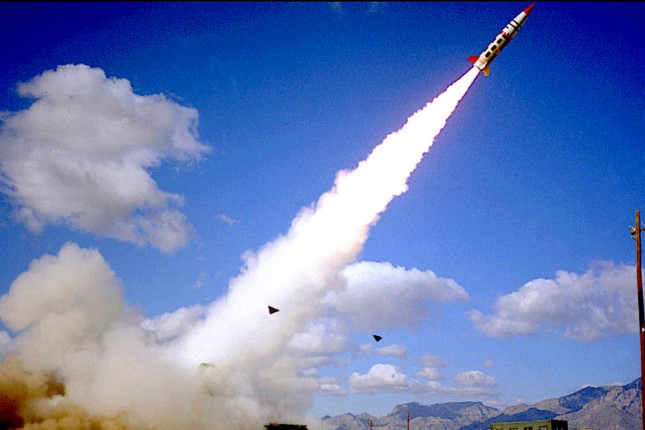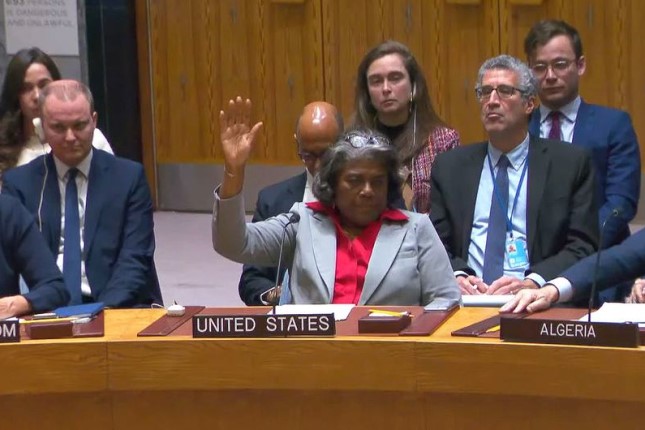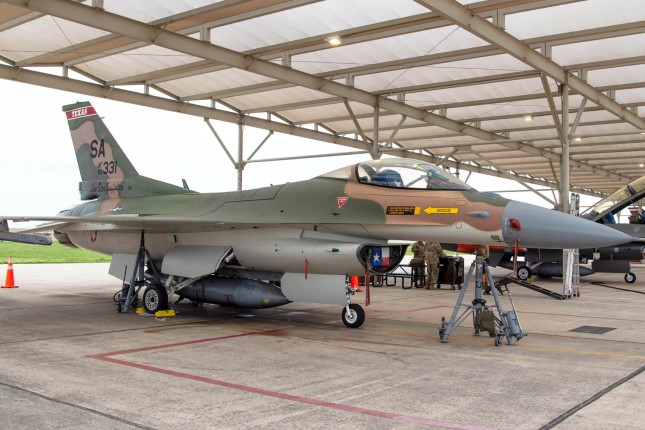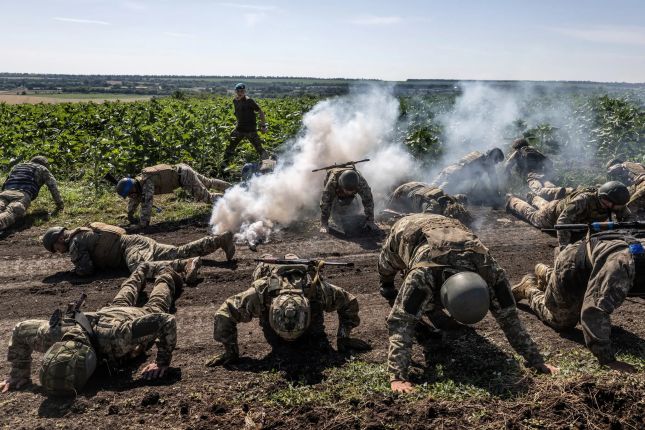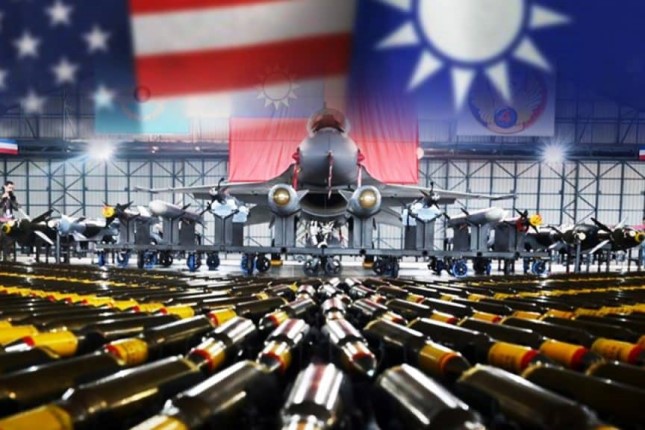During an appearance on ABC’s This Week with Jonathan Karl, U.S. Secretary of State Tony Blinken explicitly said that the U.S. would not oppose Ukraine using U.S.-supplied longer-range missiles to attack deep inside Russian territory, a move that Moscow has previously called a “red line” which would make the United States a direct party to the conflict.
“We understand that the United States is considering sending those long-range missiles that Ukraine has been asking for for a long time,” Karl said in the interview. “These are long-range missiles, 200 miles in range. Are you okay if those missiles allow Ukraine to attack deep into Russian territory?”
“In terms of their targeting decisions, it’s their decision, not ours,” answered Blinken after some bloviation.
“We’ve seen an increasing number of attacks on Russian territory by Ukrainian drones, some in Moscow, Rostov-on-Don just a couple of days ago. Did you bring that up?” asked Karl.
“No,” said Blinken.
“Are you — are you okay with — I mean, obviously, they’re — it’s their decisions, but is this war now escalating into Russia?” asked Karl.
“Jon, we haven’t encouraged and we haven’t enabled any use of weapons outside of Ukraine’s territory,” Blinken said. “Having said that, let’s take a step back for a second. Virtually every single day the Russians are attacking indiscriminately throughout the entire country of Ukraine. Just during the 48 hours that I was there going in, more missiles were launched at civilian targets, including in Kyiv while I was there; a horrific attack on a marketplace, people just going to buy food, civilians, had nothing to do with this war — killed 17 people. This is the daily life for Ukrainians. This is what they face every single day. So they have to make the basic decisions about how they’re going to defend their territory and how they’re working to take back what’s been seized from them. Our role, the role of dozens of other countries around the world that are supporting them, is to help them do that. And ultimately, what we all want is an end to this Russian aggression and an end to the aggression that, again, is just and is durable. That’s what Ukrainians want more than anyone else. That’s what we’re working toward.”
The interview then concluded without any further follow-up from Karl. By successfully winding down the clock babbling about what Ukraine has a right to do, Blinken avoided discussing the real issue of what the U.S. itself is doing.
Nobody disputes that Ukraine has a right to attack Russian territory; Russia is attacking Ukrainian territory, so of course Ukraine has a right to retaliate. That is not being seriously debated anywhere. What’s being debated is whether the U.S. should be backing those attacks, because doing so could lead to nuclear war.
A year ago when Ukraine first started urging the United States to send it the Army Tactical Missile System (ATACMS) — which has nearly four times the range of the HIMARS [high-mobility artillery rocket system] weapons the U.S. has been supplying — Russia’s Foreign Ministry spokeswoman Maria Zakharova immediately responded with a warning that their use on Russian territory would make the U.S. a direct participant in the conflict, and Russia would respond accordingly.
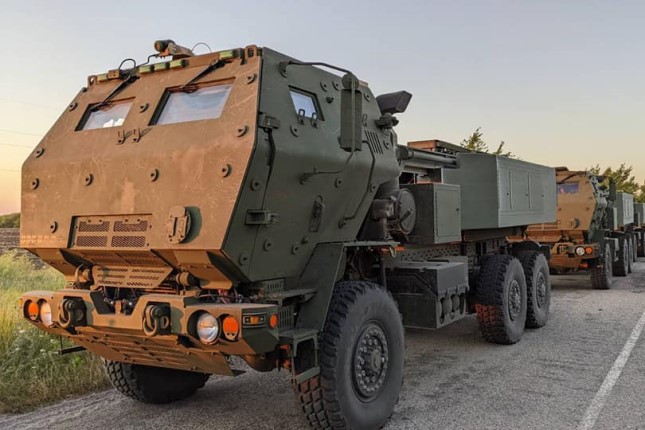
HIMARS on combat mission in Ukraine, July 2022. Photo: Mil.gov.ua / Wikimedia Commons / CC BY 4.0.
“If Washington decides to supply longer-range missiles to Kyiv, then it will be crossing a red line, and will become a direct party to the conflict,” Zakharova said, adding that Russia “reserves the right to defend its territory.”
As Michael Tracey noted on Twitter, Blinken was saying last year that Ukraine had provided assurances to the U.S. that it would not use the other weapons systems the U.S. has been supplying “against targets on Russian territory.”
Going by Blinken’s current statements and the attacks we’ve been seeing from Ukraine inside the Russian Federation, this agreement appears no longer to be in place. Blinken has already previously voiced support for Ukrainian use of U.S.-supplied weapons in Crimea, and now he’s saying the U.S. is fine with any U.S.-supplied weapons being used on any Russian territory.
Which means there appears to have been yet another massive escalation between nuclear superpowers, which is once again going alarmingly under-reported by the Western press.
In an article published in Antiwar in July, “ATACMS: Be Very Afraid of This Acronym,” West Suburban Peace Coalition President Walt Zlotow wrote that this missile system “has potential to draw the U.S. and NATO into all out war with Russia.” He continued: “ATACMS are long range U.S. missiles that can strike up to 190 miles. Top U.S. officials, likely including President Biden, are seriously considering giving ATACMS to Ukraine in their battle to take back all Russian gains in Ukraine, including Crimea. They can reach both Crimea and the Russian mainland. If so used by Ukraine to attack Russia, it may be a missile too far that could ignite Russian tactical nuclear weapons in Ukraine. Further escalation into nuclear confrontation between Russia and the U.S./NATO alliance seeking Russia’s defeat becomes more likely.”
The U.S. and its allies keep providing Ukraine with more and more offensive weapons that they had previously refused to supply for fear of getting drawn into the war and provoking a nuclear conflict.
Last year then Ukrainian Defense Minister Oleksii Reznikov correctly predicted that the U.S. would wind up supplying the tanks, F-16s and ATACMS it had previously deemed too escalatory, because that had already been established as the trend from the beginning of the war.
“When I was in D.C. in November, before the invasion, and asked for Stingers, they told me it was impossible,” Reznikov told The New Yorker last year. “Now it’s possible. When I asked for 155-millimetre guns, the answer was no. HIMARS, no. HARM [high-speed anti-radiation missile], no. Now all of that is a yes.” He added, “Therefore, I’m certain that tomorrow there will be tanks and ATACMS and F-16s.”
As Branko Marcetic explained earlier this year in an article for Responsible Statecraft titled “Mission Creep? How the U.S. role in Ukraine has slowly escalated,” this continual pattern of escalation is actually incentivizing Russia to start taking aggressive action against western powers so that its warnings and red lines will cease being ignored.
“By escalating their support for Ukraine’s military, the U.S. and NATO have created an incentive structure for Moscow to take a drastic, aggressive step to show the seriousness of its own red lines,” Marcetic writes. “This would be dangerous at the best of times, but particularly so when Russian officials are making clear they increasingly view the war as one against NATO as a whole, not merely Ukraine, while threatening nuclear response to the alliance’s escalation in weapons deliveries.”
“Moscow keeps saying escalatory arms transfers are unacceptable and could mean wider war; U.S. officials say since Moscow hasn’t acted on those threats, they can freely escalate. Russia is effectively told it has to escalate to show it’s serious about lines,” Marcetic added on Twitter.
And it’s just so strange how this isn’t the main thing everyone talks about all the time. The fact that we are drawing closer and closer to nuclear conflict should dominate headlines every single day, and the subject of how to avoid planetary disaster should be the constant focus of mainstream political discourse. But it isn’t, because that would interfere with the grand chessboard maneuverings of a globe-dominating empire working to secure unipolar planetary domination by undermining disobedient nations like Russia and China.
It’s hard to think about the end of the world. It’s hard to even wrap your mind around it, much less stand staring into the harsh white light of deep contemplation about what it is and what it would mean. A lot of cognitive dissonance and discomfort comes up, and it’s easier to shift one’s attention to something easier to chew on like the presidential race.
But this is something that urgently needs to be looked at. Because the people steering our world today appear to be driving blind.
Main photo: Test firing of an Army Tactical Missile System — TACMS — at White Sands Missile Range in New Mexico, 1990 © U.S. National Archives.
Source: Consortium News.
